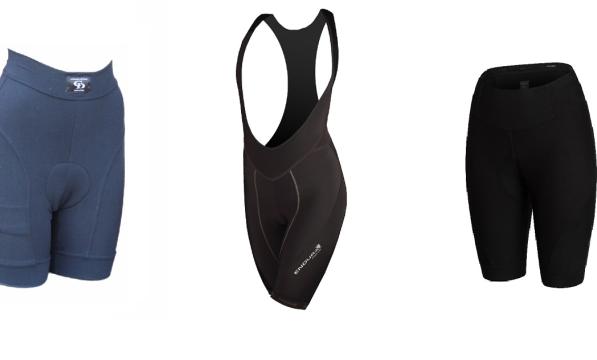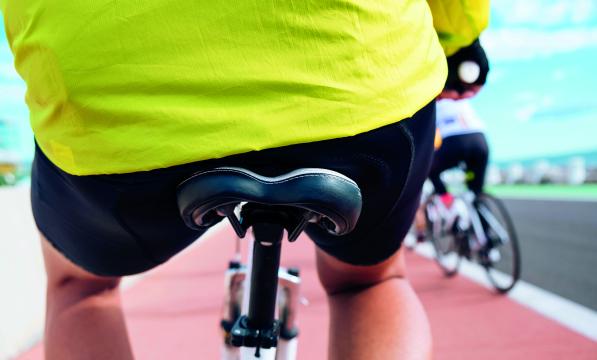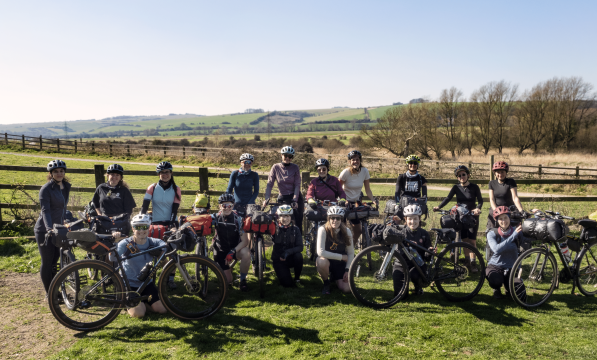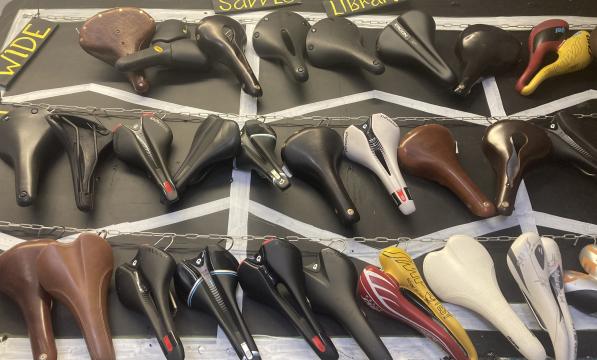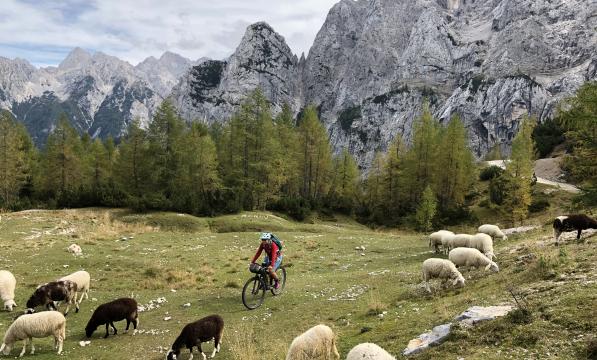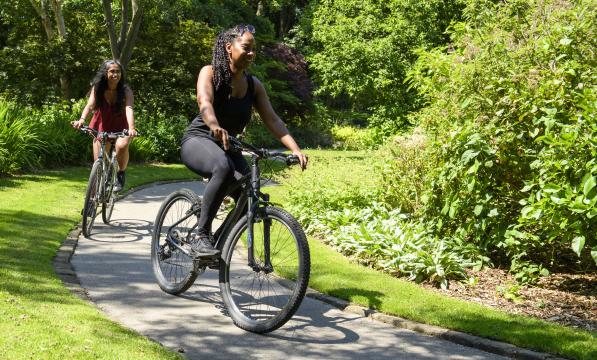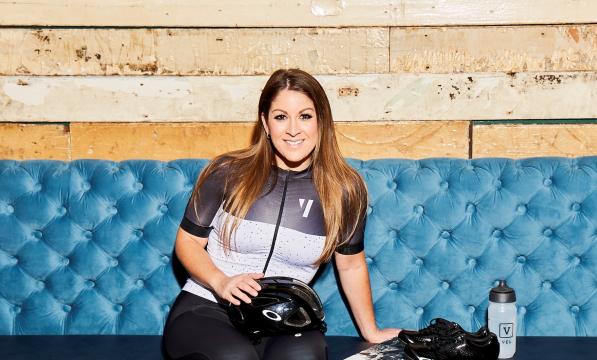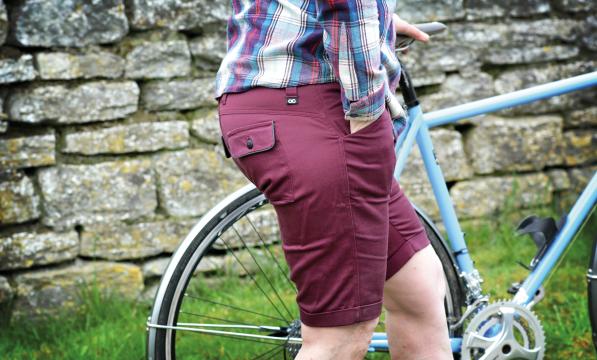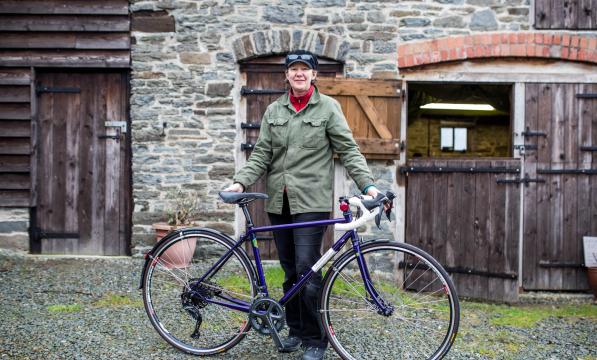Guide to saddle comfort for women

It was the late American civil rights leader Susan B Anthony who famously stated in 1896 that the bicycle “has done more to emancipate women than any one thing in the world”. This statement came a mere nine years after John Kemp Starley invented the ‘Safety Bicycle’, the freedom machine that would propel the women’s rights movement into the next century.
Suffice to say, though, that since its inception, the bicycle saddle hasn’t seen a great deal of change until of late. While the function of a saddle – to allow freedom of movement for your legs to pedal while offering a supportive perch for your bum – is a priority for most manufacturers, comfort is often further down the priority list.
Female comfort particularly is something that seems to get overlooked, and this is a problem because a lot women cyclists experience a lot of pain ‘down there’. If this something you’re going through, you’re not alone. Even the professionals suffer, with a 2014 questionnaire given to top riders by British Cycling showing that almost all had suffered problems.
In fact some of the women had suffered such serious labial swelling that they had to undergo surgery, according to Phil Burt, BC’s head of physio.
If you’re new to cycling or returning after a long break it’s normal to experience some discomfort. This should gradually disappear as your body gets used to being on the bike. But if pain persists, don’t suffer in silence. If you can understand what’s going on, you should be able to fix it. There are a few things you should consider
Riding position
On a Dutch-style bike with an upright riding position, the sit bones (ischial tuberosities) and glutes take most of the rider’s weight. This can lead to pain in the coccyx or sit bones.
On a road bike, the rider leans much further forward. This means the pelvis is tilted forwards, the sit bones take less weight, and more weight is placed on the soft tissue further forwards: the external genitalia. This can cause soreness, chafing, or tissue or pubic bone pain.
According to Jimmy Wilson of CycleFit in London: “Riding position is key to achieving comfort. We’ve seen people who have tried many different saddles and never managed to get comfortable … but they’ve put each saddle in exactly the same position. If that position is wrong, no saddle is going to be comfortable.”
When riding a bicycle, your body has three contact points with the bike: hands, feet and undercarriage. Arguably the most uncomfortable of those contact points is your undercarriage. When sitting on a road bike, the vulva – something that wasn’t designed to be weight bearing – may be required to take up to 40% of a woman’s body weight.
Riding position is key to achieving comfort. If that's wrong, no saddle is going to be comfortable
Jimmy Wilson, CycleFit
To complicate things further, our undercarriages are replete with thousands of sensitive nerve endings, while no two vulvas are the same. This is why there is no one saddle that fits all.
“You want your contact points with the bike to be skeletal, not soft tissue,” Wilson continues. “It’s essential to get all the contact points (saddle, pedals and handlebars) correctly set before worrying too much about the saddle. Once those contact points are set to the right positions, then it’s time to start thinking about the saddle itself.”
Anatomy
One of the main problems with addressing these issues is the diversity of female genitalia – as with any anatomical issue, everyone is different. There’s also the embarrassment that comes with discussing any of this in public. “If you have seriously swollen labia, it’s quite personal to talk about, but it really needs addressing as soon as possible,” says Burt.
We tend to use euphemisms such as ‘soft tissue’ and ‘lady parts’. But what we’re really referring to is the vulva: labia, clitoris and all those tender bits that get squashed between the saddle and our pelvis when we ride.
But it is possible to generalise to a degree. John Cobb, founder of US-based specialist saddle maker Cobb Cycles, conducted extensive research that involved asking women what actually worked for them. He identified two broad types: ‘innies’ and ‘outies’.
Essentially, the former means the vulva, labia and clitoris are more enclosed or drawn up internally so less soft tissue is exposed. With the latter, these areas are more pronounced and exposed.
Additionally, skeletal studies show that women have different hip socket positions. Those with more forward-facing hip sockets tend to have more protruding pubic bones, while women with more rearward hip sockets tended towards less protruding pubic bones.
Figuring out which combination you are will help you determine which saddle works best for you. Moving around in your saddle will also help relieve pressure on these sensitive spots.
Cobb comments: “We have found that outies tend to like wider-nosed saddles, while innies consistently like narrower-nosed models.”

Types of saddle discomfort
Pedalling a bike is a very repetitive motion. As your legs power the pedals to turn, your soft areas are also repeatedly rubbing and moving from side to side against your saddle. This can lead to many uncomfortable symptoms if your saddle isn’t right for you or if it’s not set up correctly.
Coccyx pain
Your coccyx is the pointy bit that sits at the very end of your spine. It’s also susceptible to discomfort from cycling as prolonged pressure on the coccyx, coupled with impact and repetitive motion can lead to bruising and backache.
Avid cyclist Penny Wood shares her story: “I had awful coccyx pain using my road bike saddle, but I managed to sort it out by moving my saddle forwards a little. I was new to cycling back then, and didn’t even know you could move saddles!”
Tailbone issues often stem from a saddle being too soft which causes your coccyx and sit bones to sink in too far, a saddle being too narrow so your sit bones aren’t properly supported, or your saddle being in the wrong position for your riding style.
Sit bone pain
Another common saddle symptom is developing sit bone aches, pains and sores, as mountain biker Bryony Paul experienced. “I have pointy sit bones so I would never have been able to do two days of riding in a row.
“Good padded shorts helped and then very recently I measured my sit bones by sitting on tin foil only to find out that they are quite wide. I bought a new saddle, and with some adjustments, I have now been doing 4-5 plus hours rides with no real problems.”
When it comes to saddle width, you want to ensure that both your sit bones rest comfortably on the saddle so they’re not teetering on the edge. Saddles often come in two different widths, narrow and wide. Just for the record, having wide sit bones doesn’t mean you have a big bum!
I had awful coccyx pain using my road bike saddle, but I managed to sort it out by moving my saddle forwards a little
Penny Wood, road cyclist
Pubic bone pain
The pubis is one of three main bones that make up the pelvis, along with the ischium and the ilium. It is the most forward facing of the three, located at the front of the body just below the abdomen.
Leaning forward on your bike – the classic racing position – can result in this bone resting on the nose of your saddle and taking more weight than it should. The increased pressure on this bone can cause a bruised feeling.
Soft tissue pain
This is another one that’s more associated with a forward-leaning position. All that sensitive undercarriage – which was never meant to be load bearing, after all – gets squashed between the saddle and the pelvis.
This can cause chafing, numbness, swelling or just plain old pain or discomfort in those areas that come into contact with the seat.
Chafing, saddle sores and infections
Skin repetitively rubbing on skin or clothing can cause chafing or saddle sores. Keep in mind that a little bit of chafing is normal when you’re first getting used to riding a bike and after a while the skin will naturally toughen up.
All that rubbing, plus heat from friction and not to mention sweat, can all combine to create the perfect conditions for bacterial ailments such as thrush and urinary tract infections.
Finding saddle comfort
At this point you might be wondering how you’ll ever find comfort on your bike. But we have a few tricks up our sleeve to help you out.
Bike positioning and fit
The best saddle in the world won’t help if you haven’t got your bike set up right.
Quick fixes that you can try at home include adjusting the saddle and handlebar heights and tilting the saddle down one or two degrees – but no more than that.
For saddle height, a useful rule of thumb is that, with your heel on the pedal, your leg should be straight when the pedal is in the lowest position. Adjusting the angle of your saddle will affect certain areas of pressure on your undercarriage, so it may take some tinkering to find the sweet spot, but it will be well worth it when you do.
Handlebar height depends on seat position, your own body shape and your riding style. But setting a slightly higher handlebar height gives you a more upright position so most of your weight is taken by your sit bones rather than soft tissue or the pubic bones.
If you spend a lot of time in the saddle it might be an idea to get a professional bike fit. This will ensure that your bike is set up correctly for your riding position and style, but it can be costly.
Padded shorts
Chamois shorts, also known as padded shorts, are typically constructed from Lycra, which provides compression and muscle support while incorporating cushioned padding for your bum.
There are many different types of padding to choose from with the more entry-level shorts using materials such as foam, while the higher-end ones typically use gel materials and more advanced fabrics for improved ventilation and antibacterial properties.
It’s like having a little cushion sewn into your shorts to help take the sting out of the hardness of your saddle. Top tip: don’t wear knickers under your chamois shorts. They’re designed to be worn commando so that you have fewer seams rubbing against you, helping to reduce chafing and friction burn.
Thicker padding doesn’t necessarily mean better. You might have to try out a few different brands to find which works best for you, but generally you want the main padding under the sit bones, with not so much in the soft tissue area.
Chamois shorts are often coupled with a lubricating chamois cream. It may sound a little strange if you’re not familiar with this, but the idea is to smear the cream directly onto the pad of your shorts, and onto your vulva and sit bones. The lubricant helps lessen friction when cycling, which, in turn, reduces the risk of developing blisters and sores.
Mrs Pradnya Pisal is a consultant gynaecologist and keen cyclist, having completed many long-distance events. When it comes to pro tips, you can’t get more professional than Mrs Pisal who says: “Wear fitted, comfortable clothes and use plenty of lubrication. I apply chamois cream on the padded shorts directly, in the areas that come into contact with the vulva, as well as on the labia itself.”
Hygiene
It should hopefully go without saying, but keeping things clean and dry will help reduce saddle sores and prevent yeast and urinary tract infections.
Mrs Pisal again: “You need to make sure your clothes are washed as soon as possible after a bike ride.”
Change out of your cycling gear as soon as you’ve finished your ride and shower as quickly as you can, too. If you’re on a multi-day ride, wet wipes are your friend!
Wear fitted, comfortable clothes and use plenty of lubrication
Mrs Pradnya Pisal, consultant gynaecologist
Avoid waxing and shaving
Believe it or not, how you maintain your pubic hair also has a part to play in finding saddle comfort. In 2016, British Cycling advised their women’s team to grow their pubic hair as the moving layer between skin and shorts can dramatically reduce the discomfort of ingrown hairs and sores.
This is bad news for shavers and waxers, as Mrs Pisal confirms: “Having pubic hair is likely to help reduce discomfort as it may act as a cushion to reduce friction directly on the skin. One can trim the hair if needed but best to leave it and not cut them, or just use pubic hair trimmers.”
The right saddle
Saddle choice is intensely personal – if you ask 10 different women which is their favourite, you’re likely to get 10 different answers. Relying on recommendations from friends, however much you trust their opinion, isn’t your best option. The way forward is to just try what’s on offer.
Marijn de Vries, a retired pro racer from the Netherlands, says: “For me, it was trial and error. But I was lucky and found the right saddle quite quickly.”
In general, shorter saddles can help relieve pressure on the pubic bone and vulva by forcing you to sit more upright. Saddles with cut-outs – a hole or channel in the centre of the seat – also help relieve pressure on these areas. Forked saddles can help because the two ‘forks’ flex as the rider moves around, rather than staying rigid.
Wider isn’t necessarily better; a wide saddle can rub the soft skin of the inner thighs. You do want to ensure your sit bones are fully supported, though. You can get a good idea of how wide your sit bones are by sitting on a piece of corrugated cardboard for several minutes.
Mark the two main impressions, which is where your sit bones are, and find the centre point of these impressions. Then measure the distance between these two points. Armed with this information you should be able to find a saddle that’s the right width for you.
Some bike shops will put you and your bike on a turbo-trainer and let you test a variety of saddles.
“Some bike fitters use an electronic system for measuring the pressure on your saddle,” adds de Vries. “It’s like a kind of plastic cover that goes over your saddle, and it contains many pressure sensors. When you ride the bike on the turbo they can see on the computer screen where the pressure points are, and this will show you straight away what might take four hours on the road to discover.”
Saddle libraries
Shelling out for a new saddle until you find the right one will end up being very expensive, which is why saddle libraries have been popping up.
London-based bike workshop London Bike Kitchen runs a service that allows you to get measured up and choose a saddle you’d like to take home for two weeks to test. If you like the saddle, you can ask the store to order you one, or if you prefer, you can return your test saddle and choose another – and another and another – until you find the ‘one’.
Jenni Gwiazdowski is the founder and director of LBK. She has many years’ experience when it comes to choosing the right saddle and can offer great advice.
Similarly, The Seat Post is an online rental service which lets you lease a saddle for up to 30 days for £15, plus a deposit. If you don’t like it, you return the saddle and get your deposit back. If you do like it, you can order a new one and the £15 hire fee is credited against the cost. You can take up to three 30-day hires in any 12-month period for a total fee of £30.
Ask at your local bike shop if they have test saddles you can try out prior to purchase. It’s in their best interests to keep you happy, after all.
Saddle pain might be common, but you don’t have to suffer in silence. With the right equipment and setup, your discomfort should fade away. While it may not always feel like it, your vulva is wonderful and strong. It’s designed to expel waste, facilitate intercourse, achieve orgasms and, in some cases, give birth, which means your vulva can withstand many miles of cycling happiness.
This article also includes information adapted from the article Saddled with Pain by Thomas Henry, first published in the June/July 2016 edition of Cycle, with additional content by Cycling UK digital officer Rebecca Armstrong.

